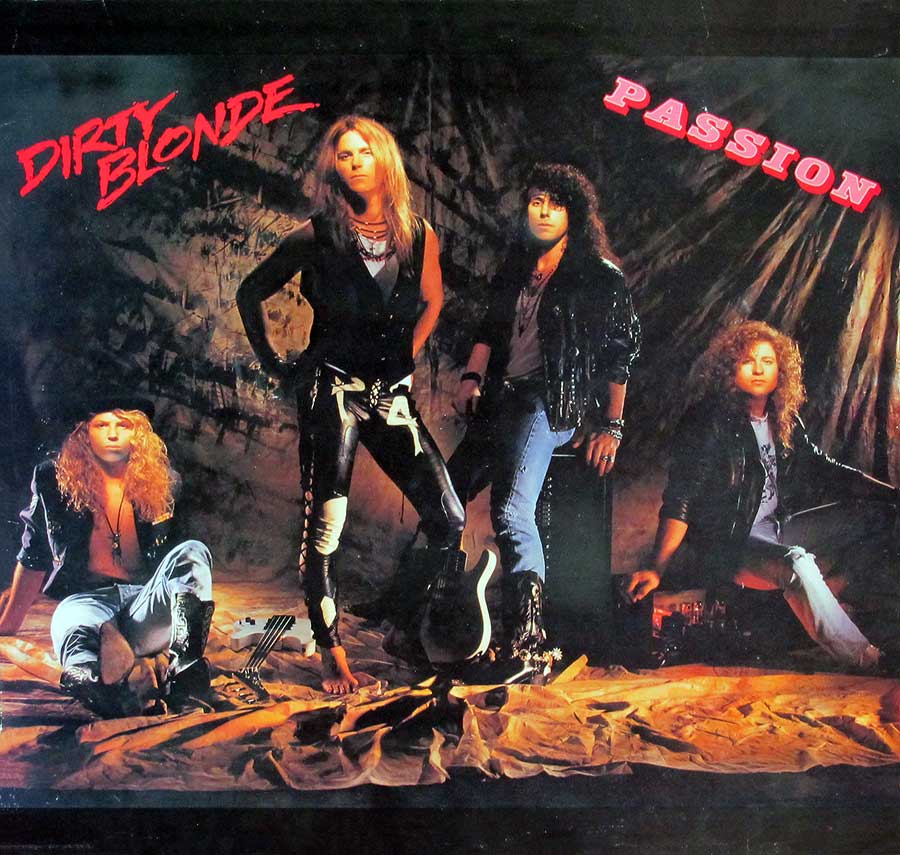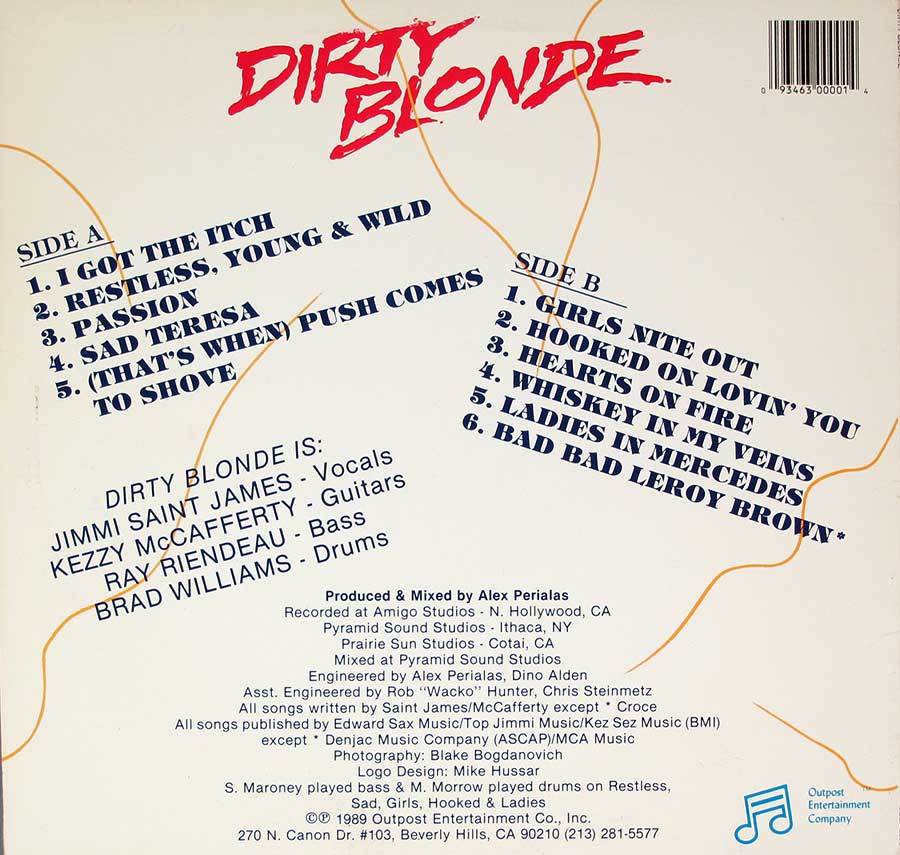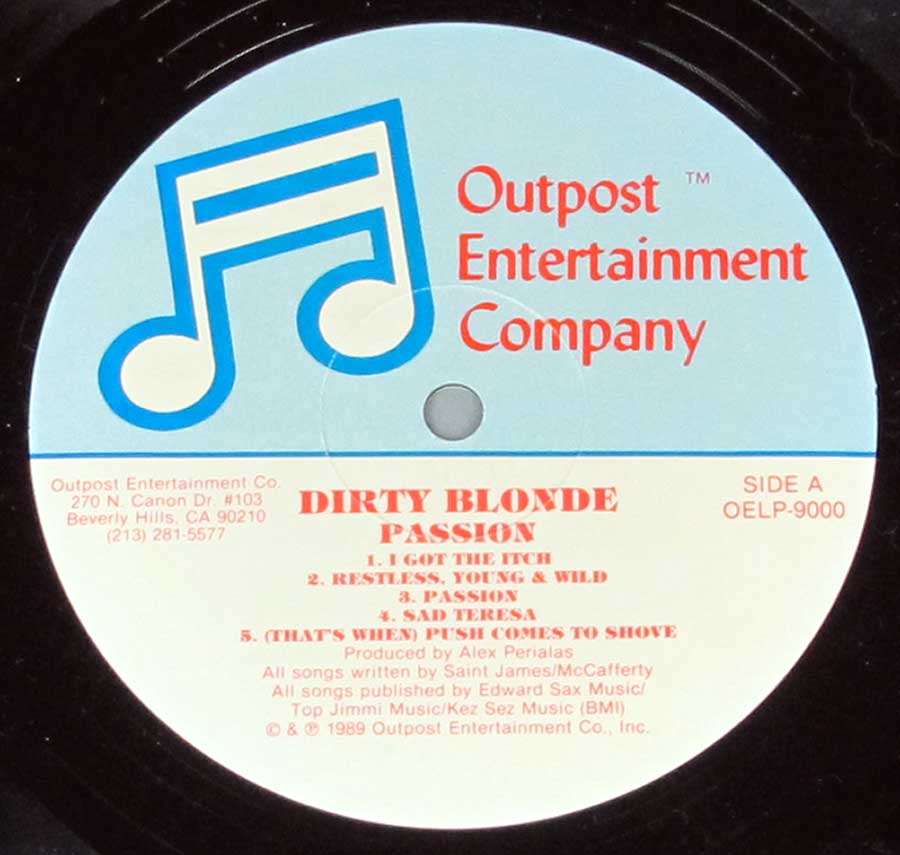The Business Behind “Passion”
How Dirty Blonde Secured Big-League Production Without a Major Label
In 1989, Los Angeles band Dirty Blonde released “Passion” — a high-gloss hard rock album with all the sonic power and studio finesse of a major-label act. Yet the band itself was virtually unknown. How did a small group of glam hopefuls land a production team featuring Alex Perialas (Anthrax, Testament), Dino Alden (Shrapnel Records), and first-rate engineers like Chris Steinmetz? The answer lies in the peculiar economics of the late-1980s Sunset Strip scene.
Right Place, Right Time
By the late eighties, Hollywood was the epicenter of the hard-rock gold rush. Dozens of small record labels, management firms, and private investors scoured the clubs of Sunset Boulevard for the next big MTV-ready act. For a promising group with a professional image, it wasn’t hard to attract financial backers willing to bankroll an album in hopes of a lucrative distribution deal.
Outpost Entertainment: The Financial Backbone
Dirty Blonde’s debut was released under Outpost Entertainment Co., a Beverly Hills–based boutique label. Outpost was part of a growing trend of privately funded companies that operated halfway between artist management and independent production. They covered studio time, artwork, and mixing costs in exchange for ownership of the master recordings. It was a calculated gamble — a polished product could later be licensed to a larger label if it showed promise.
Deferred Deals and Shared Studio Networks
Producers like Perialas and Alden frequently accepted deferred payment arrangements, taking smaller upfront fees in exchange for a share of royalties or publishing rights. This made it possible for up-and-coming bands to work in world-class studios such as Pyramid Sound in New York and Prairie Sun Studios in California — both of which were known for flexible scheduling and cross-label collaboration. The network of engineers, producers, and small-label entrepreneurs formed a creative ecosystem that occasionally elevated obscure acts into professional-sounding contenders.
Speculative Glam Metal Economics
At the peak of the glam-metal boom, investors treated rock bands like start-ups. Budgets of $25,000 to $50,000 were common for an independent LP, often funded by club owners, promoters, or enthusiastic fans seeking a tax write-off. In Dirty Blonde’s case, the funds likely came from a mixture of private investment, label advances, and deferred studio costs. The objective was simple: produce a record that sounded major-label ready and hope it would attract radio or distribution interest.
A High-Class Record from a Grassroots Band
The end result — “Passion” — sounds every bit as polished as the era’s major releases, from its tight production and radio-friendly mix to its professional artwork and photography. Behind the scenes, however, it was the product of entrepreneurial resourcefulness rather than record-label muscle. Dirty Blonde leveraged the open studio culture of the time, where world-class producers were only a phone call and a modest retainer away.
Legacy and Lessons
While Dirty Blonde never achieved mainstream fame, their story mirrors that of many late-1980s bands who briefly touched the professional edge of the industry before the market collapsed in the early ’90s. “Passion” remains a textbook example of how talent, timing, and clever financing could propel an unsigned act into the same recording rooms as thrash and arena-rock heavyweights.
In the neon twilight of Hollywood’s hard-rock heyday, Dirty Blonde proved that with the right backers, even unknowns could sound like rock royalty.


